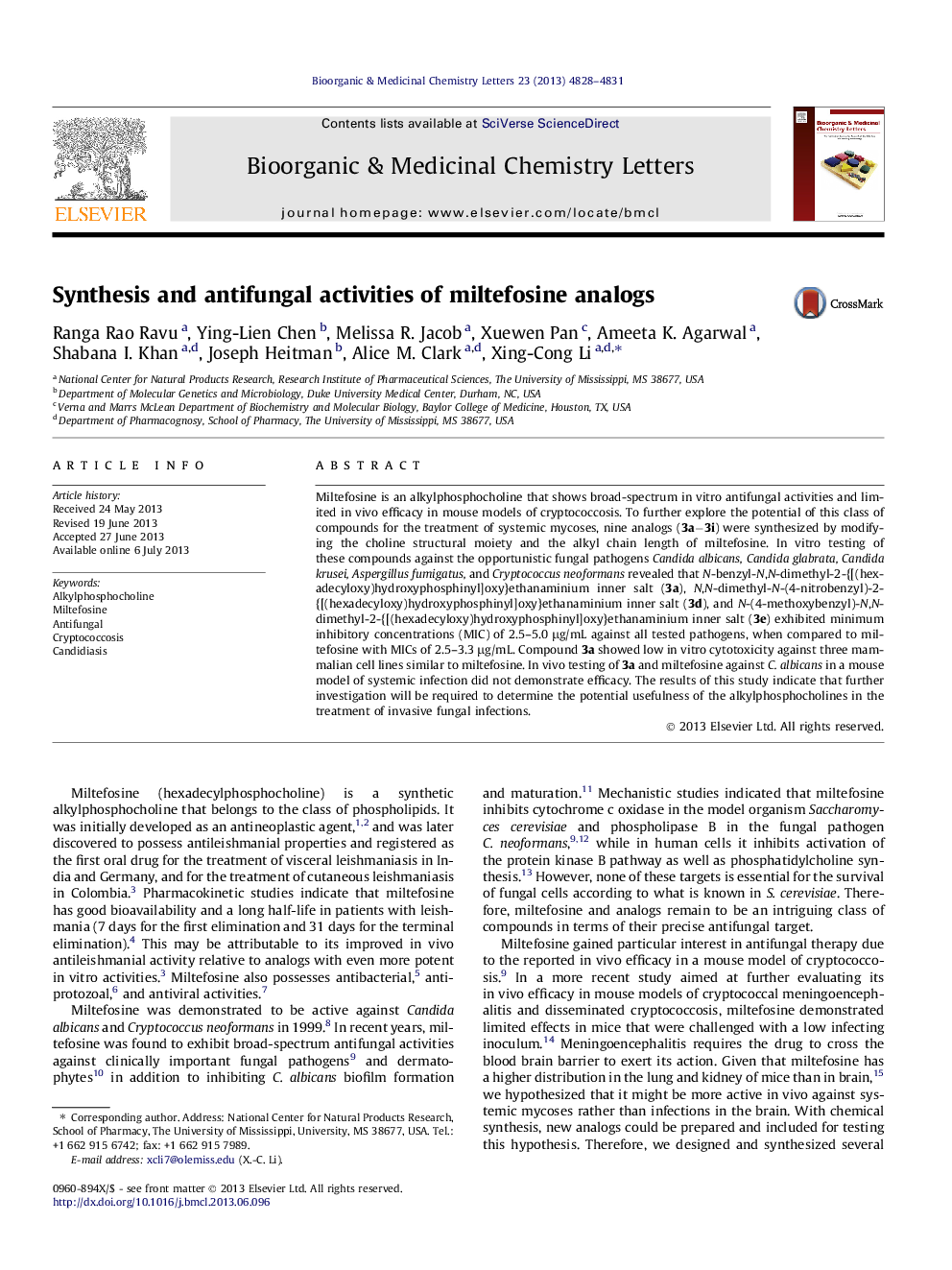| Article ID | Journal | Published Year | Pages | File Type |
|---|---|---|---|---|
| 10595398 | Bioorganic & Medicinal Chemistry Letters | 2013 | 4 Pages |
Abstract
Miltefosine is an alkylphosphocholine that shows broad-spectrum in vitro antifungal activities and limited in vivo efficacy in mouse models of cryptococcosis. To further explore the potential of this class of compounds for the treatment of systemic mycoses, nine analogs (3aâ3i) were synthesized by modifying the choline structural moiety and the alkyl chain length of miltefosine. In vitro testing of these compounds against the opportunistic fungal pathogens Candida albicans, Candida glabrata, Candida krusei, Aspergillus fumigatus, and Cryptococcus neoformans revealed that N-benzyl-N,N-dimethyl-2-{[(hexadecyloxy)hydroxyphosphinyl]oxy}ethanaminium inner salt (3a), N,N-dimethyl-N-(4-nitrobenzyl)-2-{[(hexadecyloxy)hydroxyphosphinyl]oxy}ethanaminium inner salt (3d), and N-(4-methoxybenzyl)-N,N-dimethyl-2-{[(hexadecyloxy)hydroxyphosphinyl]oxy}ethanaminium inner salt (3e) exhibited minimum inhibitory concentrations (MIC) of 2.5-5.0 μg/mL against all tested pathogens, when compared to miltefosine with MICs of 2.5-3.3 μg/mL. Compound 3a showed low in vitro cytotoxicity against three mammalian cell lines similar to miltefosine. In vivo testing of 3a and miltefosine against C. albicans in a mouse model of systemic infection did not demonstrate efficacy. The results of this study indicate that further investigation will be required to determine the potential usefulness of the alkylphosphocholines in the treatment of invasive fungal infections.
Related Topics
Physical Sciences and Engineering
Chemistry
Organic Chemistry
Authors
Ranga Rao Ravu, Ying-Lien Chen, Melissa R. Jacob, Xuewen Pan, Ameeta K. Agarwal, Shabana I. Khan, Joseph Heitman, Alice M. Clark, Xing-Cong Li,
